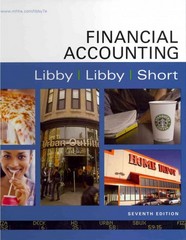Question
Respond to the following discussion questions based on your analysis of the case: Submit an ABC Income Statement for Classic Pen. Using the new information
Respond to the following discussion questions based on your analysis of the case:
- Submit an ABC Income Statement for Classic Pen. Using the new information from the ABC system come up with a proposal on how to deal with the 4 products.
- What is a recommendation on how to deal with future product introductions now that we have a better understanding about the microeconomic characteristics of the firm.
The Classic Pen Company Case
Jane Dempsey, controller of the Classic Pen Company, was concerned about the recent
financial trends in operating results. Classic Pen had been the low-cost producer of traditional BLUE
pens and BLACK pens. Profit margins were over 20% of sales.
Several years earlier Dennis Selmor, the sales manager, had seen opportunities to expand the
business by extending the product line into new products that offered premium selling prices over
traditional BLUE and BLACK pens. Five years earlier RED pens had been introduced, which
required the same basic production technology but could be sold at a 3% premium. And last year
PURPLE pens had been introduced because of the 10% premium in selling price they could
command.
But Dempsey had just seen the financial results (see Exhibit 1) for the most recent fiscal year
and was keenly disappointed.
The new RED and PURPLE pens do seem more profitable than our BLUE and
BLACK pens, but overall profitability is down and even the new products are not
earning the margins, we used to see from our traditional products. Perhaps this is the
tougher global competition I have been reading about. At least the new line,
particularly PURPLE pens, is showing much higher margins. Perhaps we should
follow Dennis' advice and introduce even more specialty colored pens. Dennis
claims that consumers are willing to pay higher prices for these specialty colors.
Jeffrey Donald, the manufacturing manager, was also reflecting on the changed environment
at Classic Pen:
Five years ago, life was a lot simpler. We produced just BLUE and BLACK
Pens in long production runs, and everything ran smoothly, without much
intervention. Difficulties started when the RED pens were introduced, and we had
to make more changeovers. This required us to stop production, empty the vats, clean out all remnants of the previous color, and then start the production of the red ink. Making black ink was simple; we didn't even have to clean out the residual blue ink from the previous run if we just dumped in enough black ink to cover it up. But for the RED pens, even small traces of the blue or black ink created quality problems. And the ink for the new PURPLE pens also has demanding specifications, but not quite as demanding as for RED pens.
We seem to be spending a lot more time on purchasing and scheduling
activities and just keeping track of where we stand on existing, backlogged, and
future orders. The new computer system we got last year helped a lot to reduce the
confusion. But I am concerned about rumors I keep hearing that even more new
colors may be introduced in the near future. I don't think we have any more
capability to handle additional confusion and complexity in our operations.
Operations
Classic produced pens in a single factory. The major task was preparing and mixing the ink
for the different colored pens. The ink was inserted into the pens in a semiautomated process. A
final packing and shipping stage was performed manually.
Each product had a bill of materials that identified the quantity and cost of direct materials
required for the product. A routing sheet identified the sequence of operations required for each
operating step. This information was used to calculate the labor expenses for each of the four
products. All of the plant's indirect expenses were aggregated at the plant level and allocated to
products based on their direct labor content. Currently this overhead burden rate was 300% of direct
labor cost. Most people in the plant recalled that not too many years ago the overhead rate was only
200%.
Activity-Based Costing
Jane Dempsey had recently attended a seminar of her professional organization in which a
professor had talked about a new concept, called activity-based costing (ABC). This concept seemed
to address many of the problems she had been seeing at Classic. The speaker had even used an
example that seemed to capture Classic's situation exactly.
The professor had argued that overhead should not be viewed as a cost or a burden to be
allocated on top of direct labor. Rather, the organization should focus on activities performed by the
indirect and support resource of the organization and try to link the cost of performing these activities
directly to the products for which they were performed.
Dempsey obtained several books and articles on the subject and soon tried to put into
practice the message she had heard and read about.
Activity-Based Cost Analysis
Dempsey first identified six categories of support expenses that were currently being
allocated to pen production:


Step by Step Solution
There are 3 Steps involved in it
Step: 1

Get Instant Access to Expert-Tailored Solutions
See step-by-step solutions with expert insights and AI powered tools for academic success
Step: 2

Step: 3

Ace Your Homework with AI
Get the answers you need in no time with our AI-driven, step-by-step assistance
Get Started


